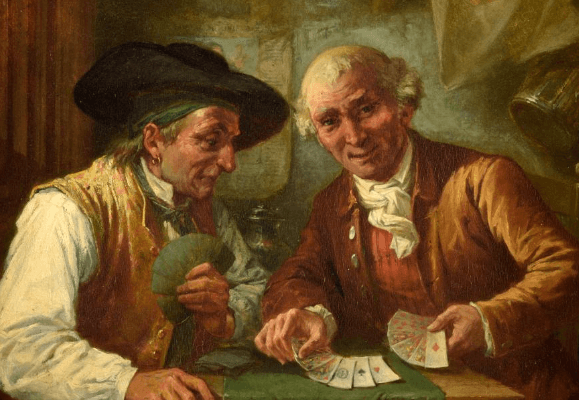The Artworks of Mihaly Kovacs: A Glimpse into Hungarian History

Mihaly Kovacs is a celebrated figure in the world of Hungarian art, known for his profound contributions to 19th-century painting. Born in 1818, Kovacs’s artistic journey is marked by his dedication to portraying Hungarian culture and history through his unique blend of Romanticism and Realism. His works capture the spirit of his homeland and provide insight into the struggles and triumphs of the Hungarian people during a time of political upheaval. This article will explore the life and art of Mihaly Kovacs, focusing on his most notable works and the lasting impact of his artistic legacy.
The Early Life of Mihaly Kovacs
Mihaly Kovacs was born in Szeged, Hungary, where his early passion for art became apparent. His talents were nurtured by his family, and by the time he was a young man, he had gained the attention of local patrons who supported his artistic studies. Kovacs traveled to Vienna and then to Italy, where he was influenced by the Renaissance masters. These early experiences shaped his artistic sensibilities and laid the foundation for his future work, where he would merge classical techniques with the emotional depth of Romanticism.
See also: Foam Protective Packaging: Benefits, Applications, and Sustainable Solutions
Artistic Style and Influence
Kovacs’s style is a harmonious combination of Romanticism and Realism. He was deeply influenced by the Romantic movement, which emphasized emotion, nature, and the glorification of the past. However, he also incorporated Realism into his work, portraying his subjects with authenticity and attention to detail that allowed viewers to connect emotionally with the scenes. His art often focused on historical and national themes, reflecting Hungary’s turbulent political landscape.
Romanticism in Kovacs’s Art
Romanticism played a significant role in Kovacs’s artistic approach. He sought to evoke emotional responses from his audience, whether through depictions of nature, portraits, or historical events. Kovacs’s works frequently depicted heroic figures from Hungarian history, with a focus on their emotions, struggles, and ideals. This emotional depth is a hallmark of his style, which resonated strongly with the Hungarian people, particularly during the country’s fight for independence in the 19th century.
Realism in Kovacs’s Art
While Kovacs was influenced by Romanticism, his paintings also contain elements of Realism. He paid close attention to the physical details of his subjects, portraying them in a lifelike manner. This blend of Romanticism and Realism gave his work a unique quality that allowed him to convey both the grandeur of historical events and the human experiences within them. His commitment to portraying his subjects accurately made his work not only artistically compelling but also historically significant.
Mihaly Kovacs’s Notable Artworks
The Oath of the Hungarian Diet
One of Kovacs’s most well-known paintings, “The Oath of the Hungarian Diet,” depicts a pivotal moment in Hungarian history. The painting captures the dramatic scene in which members of the Hungarian Diet swore an oath to uphold the Hungarian Constitution during the revolution of 1848. Kovacs masterfully conveys the intensity of the moment, using light and shadow to highlight the emotion and significance of the event. The painting stands as a powerful symbol of Hungarian patriotism and the fight for freedom.
Self-Portrait with Kossuth-hat
Mihaly Kovacs’s “Self-Portrait with Kossuth-hat” is an introspective piece that not only showcases his talent but also serves as a reflection of his political convictions. The portrait features Kovacs wearing a Kossuth-hat, a symbol associated with Lajos Kossuth, the leader of the Hungarian revolution. The hat became an emblem of national pride during Hungary’s struggle for independence. This self-portrait is not just an artistic work but a political statement, representing Kovacs’s solidarity with the revolutionary movement. His serious expression and the detailed rendering of his clothing emphasize his personal connection to the cause and highlight his skill in portraiture.
Kovacs’s Contribution to Hungarian Art
Mihaly Kovacs’s work is deeply intertwined with the national identity of Hungary. His paintings not only depict important historical events but also evoke a sense of pride and resilience in the face of adversity. Kovacs played a significant role in developing a uniquely Hungarian style of painting, one that drew from European traditions while maintaining a distinct national character.
Historical Narratives
Kovacs’s paintings often focused on historical narratives that reflected Hungary’s fight for independence and sovereignty. By capturing the essence of these moments, he preserved the emotions, struggles, and sacrifices of the Hungarian people. His works became a visual testament to the nation’s history, serving both as an artistic achievement and a cultural archive.
Portraiture and Realism
In addition to his historical paintings, Kovacs was also a master of portraiture. His ability to capture the individuality and emotion of his subjects made his portraits stand out. Whether depicting notable figures in Hungarian history or everyday citizens, Kovacs’s portraits are characterized by their attention to detail and emotional depth. His unique blend of Romanticism and Realism shines through in his portraits, which convey both the personality and the spirit of the individuals he painted.
Legacy and Influence
Mihaly Kovacs left a lasting legacy on Hungarian art. His works continue to be celebrated for their technical brilliance and their ability to convey powerful emotions. His portrayal of Hungarian history and culture has made him an enduring figure in the world of art. Kovacs’s influence can be seen in the generations of Hungarian artists who followed in his footsteps, drawing inspiration from his ability to blend national pride with artistic excellence.
Influence on Hungarian Artists
Kovacs’s work has had a profound impact on subsequent generations of Hungarian artists. His focus on national identity, historical events, and emotional depth paved the way for artists who sought to use their art to explore Hungary’s complex political and cultural history. Kovacs’s techniques, especially his use of light and shadow, have influenced both Hungarian and European art movements, ensuring his place in the pantheon of great artists.
Preservation of Hungarian Culture
In a time of political turmoil, Kovacs’s work helped preserve Hungarian culture and history. His paintings became symbols of the national struggle for independence and provided a visual narrative that has endured through the years. Today, his works are considered invaluable cultural artifacts that reflect the history and resilience of the Hungarian people.
Mihaly Kovacs’s artistic achievements are a testament to his talent and his deep connection to Hungarian culture. Through his mastery of Romanticism and Realism, he created works that resonate with emotional power and historical significance. Whether through his historical scenes or his intimate portraits, Kovacs has left an indelible mark on the world of art. His legacy, particularly works like Mihaly Kovacs’s “Self-Portrait with Kossuth-hat”, continues to inspire and remind us of the enduring power of art to reflect the national identity and personal conviction.



